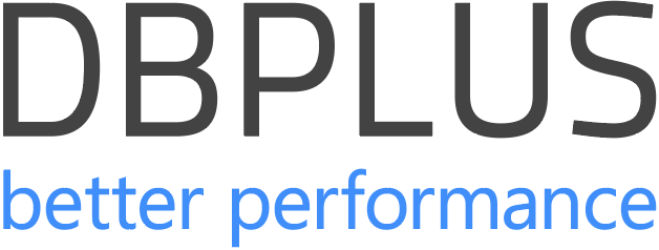Oracle vs SQL Server—two goliaths clashing over the supremacy of database management. These platforms emanate from the venerable houses of Oracle Corporation and Microsoft, respectively. They have evolved through decades, consistently pushed by the relentless pursuit of excellence and the demands of a data-driven world. This ongoing battle shaped their capabilities and influenced a great part of the technological choices of organizations around the globe.
We will get into their origins, architecture, and the nuances that dictate their adoption in various enterprise contexts.
History and Evolution—Oracle vs SQL Server
Oracle
Oracle first unfurled its sails in 1977, a brainchild of Larry Ellison and his compatriots at Software Development Laboratories. It was a time when the concept of a commercial relational database was nascent. By 1983, the ensemble, now Oracle Corporation, introduced Oracle Database, a product that became synonymous with data handling. Through decades, Oracle has been a harbinger of innovations, with its core focus on security, performance, and scalability.
SQL Server
In the chronicles of database management, 1989 marks the debut of SQL Server, introduced by Microsoft in partnership with Sybase. Originally tailored for the environments of OS/2, SQL Server swiftly shifted to the burgeoning Windows ecosystem. This expanded its horizons and cemented its reputation as a user-friendly relational database system that can do it all.
Core Architecture and Platform Compatibility—Oracle vs SQL Server
The architecture reveals not just the bone structure. It’s about the nervous systems that enable these database giants to function in diverse IT environments.
Oracle: A Strong Framework for Diverse Environments
Oracle’s architectural blueprint is no mere stack of bricks. It’s a complex, adaptive structure built for the wild variances of modern computing environments. Its multi-layered architecture’s focal point is on diversity, efficiently managing titanic data volumes sprawling across disparate platforms.
Windows, Linux, Solaris, and more—Oracle is a chameleon in the world of operating systems.
SQL Server: From Windows Loyalist to Linux Acquaintance
Historically, SQL Server has been the quintessential companion for Windows. It was crafted to mesh with Microsoft’s ecosystem as snugly as a nut in its bolt. Yet, some developments do paint a picture of change. SQL Server 2017 extended an olive branch to Linux, marking it a moment to remember.
Comparing the Two
The contrasting architectures and platform compatibilities of Oracle and SQL Server offer a clear window into their operational ideologies. Oracle’s complex, adaptable architecture is ideal for enterprises. Especially those requiring a database system that can integrate into a diverse and dynamic operational environment. On the other hand, SQL Server’s evolution toward Linux and container-based deployments reflects its growing adaptability. By that, it caters to a broader market while maintaining strong ties to its Windows-based roots.
Language and Usability—Oracle vs SQL Server
Oracle: A Linguistic Powerhouse
Oracle deploys PL/SQL—a potent dialect of SQL based on Turbo Pascal—that gloats about its rich vocabulary and syntax designed for precise data manipulation and complex procedural programming.
However, with great power comes a steep learning curve. Navigating PL/SQL’s extensive functionalities can feel like mastering a dense, rule-heavy language, where proficiency unlocks a vast world of possibilities. This complexity, while a boon for tech-savvy developers, can pose a formidable barrier to those less familiar with its intricate syntax and advanced capabilities.
SQL Server: Clarity in Communication
Conversely, SQL Server uses Transact-SQL (T-SQL), a dialect that emphasizes clarity and simplicity, aligning with SQL Server’s overall user-friendly design philosophy. T-SQL extends the standard SQL syntax to include procedural programming, local variables, and various support functions that enhance its data-handling capabilities.
T-SQL’s straightforward nature makes SQL Server an attractive option for organizations that prioritize ease of use and speed in application development. Its relative simplicity does not hinder its capability but rather ensures that routine database tasks can be performed efficiently and without unnecessary complexity. This approachability extends to SQL Server’s usability, which is highly touted among databases for its user-friendly interface and management tools.
Performance and Optimization Features—Oracle vs SQL Server
Each system employs distinct mechanisms and optimizations, reflecting its underlying architecture and design philosophy. How do these technologies sculpt their approaches to performance?
Oracle
- Cost-Based Optimizer (CBO): Oracle employs a shrewd optimizer that juggles execution strategies based on the intimate secrets of data distribution and operational stats, crafting the swiftest paths through the data maze.
- Partitioning: Offers a kaleidoscope of partitioning techniques—ranging from range to hash—that segment hefty data sets into manageable, nimbler pieces, streamlining access and administration.
- In-Memory Database (IMDB): Steps up the tempo by storing hot data in RAM’s rapid embrace, slashing the time spent on tedious disk interactions to a mere whisper.
- Advanced Compression: Oracle compresses the sprawling data sprawl, easing the storage burden while simultaneously boosting the speed of data voyages by trimming down unnecessary I/O chatter.
SQL Server
- Execution Plan Caching: Harnesses the power of déjà vu by recycling execution plans, cutting down the preparatory fuss for familiar queries and speeding up the response time.
- Automatic Tuning: Keenly observes workload patterns, automatically tweaking the system by introducing or discarding indexes, adapting like a chameleon to shifting data landscapes.
- Buffer Management: Masterfully orchestrates a cache of frequently accessed data, ensuring that SQL Server pirouettes around potential disk delays, delivering data with a flourish.
- Partitioning: Mirrors Oracle’s savvy by splitting data estates into neater parcels, either by range or hash, which helps manage sprawling databases with the finesse of a seasoned estate manager.
- Columnstore Indexes: Employs a powerful indexing technique that transforms the storage narrative, turning columns into compressed, high-speed lanes, ideal for whizzing through warehouse-sized queries.
Database Management and Scalability—Oracle vs SQL Server
Oracle: Architecting for the Enterprise
Oracle’s scalability is deeply ingrained in its architecture, which accommodates the most demanding enterprise applications. With features like Real Application Clusters (RAC) and Automatic Storage Management (ASM), Oracle facilitates expansive database environments that can grow dynamically with organizational needs. These features ensure that Oracle databases not only scale up efficiently but also manage this scalability with a finesse that minimizes administrative overhead.
SQL Server: Streamlined for Accessibility and Growth
SQL Server presents a contrasting paradigm—it’s designed not so much to sprawl as to scale smartly within its more defined confines. Its scalability is particularly tuned to integrate smoothly with the Windows ecosystem, providing a cohesive environment for growth. SQL Server implements scalability through features like partitioning and compression, which enhance performance without the extensive overhead associated with larger systems.
SQL Server’s method of scaling tends to be more straightforward, which reflects its general user-friendliness. It supports vertical scaling effectively, making it a strong candidate for businesses that expect significant growth but within a controlled, manageable scope.
Security and Transaction Handling—Oracle vs SQL Server
Oracle: Advanced Consistency and Concurrency
Oracle’s transaction handling is engineered with a fortress-like mentality, emphasizing data integrity and consistency across its vast network. It supports complex, high-volume transactions that are typical in enterprise settings, with an architecture that includes features like multi-version concurrency control (MVCC). This approach allows multiple users to access data concurrently without interference, using “snapshots” for isolation and ensuring that users only see data that has been committed, hence maintaining the consistency and accuracy of transactions.
Oracle’s transaction control is further fortified by its comprehensive rollback capabilities. These allow it to revert to previous states effortlessly, which is indispensable in environments where transactions are numerous and data integrity is paramount. This capability ensures that Oracle databases can handle intricate transaction sequences and recover from disruptions without losing data fidelity.
SQL Server: Robust and Streamlined Transactions
SQL Server also provides strong transaction management, but with a streamlined approach that integrates closely with its system environment. It uses locking and row versioning to manage concurrency, ensuring data integrity by preventing users from accessing data in mid-transaction. This ensures that transactions in SQL Server are completed without external interference, preserving the sanctity and reliability of the data.
However, unlike Oracle, SQL Server does not inherently support the same level of transaction rollback and recovery. It manages transactions efficiently but with a focus on maintaining system performance and immediacy, which can sometimes mean a trade-off in terms of recovery flexibility.
Pricing and Licensing Models—Oracle vs SQL Server
Oracle: Complex but Adjustable
Oracle’s pricing approach composes of tiers. Each of them offers several editions with escalating capabilities and costs—from the streamlined Express Edition, which is free but comes with limited features, ideal for students or small environments, to the full-featured Enterprise Edition designed for high-demand, large-scale operations.
The flexibility in Oracle’s licensing is substantial, but with that flexibility comes complexity. Each tier comes with its own set of features and corresponding price points. Navigating this can feel like plotting a course through a labyrinthine market—exciting, potentially rewarding, but undeniably complex. Businesses must carefully evaluate their needs against Oracle’s pricing to ensure they are paying only for the functionalities they require, without overcommitting resources.
SQL Server: Transparent and Predictable
In contrast, SQL Server adopts a more straightforward pricing model. You see is what you get. The pricing is transparent and predictable with fewer editions, which simplifies decision-making for businesses. SQL Server offers essential editions. Express, for example, which is free and sufficient for small databases. It also scales up to more powerful versions such as the Enterprise edition. This one, while costly, is full of features designed to support large, complex applications.
SQL Server’s licensing model is more predictable, with costs primarily based on core counts or server/cal (client access license) models. This straightforward approach removes the guesswork from budgeting for database needs, making it a suitable choice for businesses looking for simplicity in their software investments without the nuanced tailoring of Oracle’s offerings.



